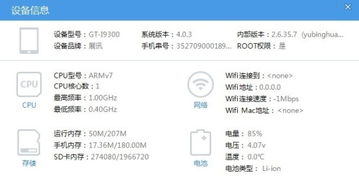
窃听设备 英文,Introduction to Eavesdropping Devices
时间:2024-10-28 来源:网络 人气:
Introduction to Eavesdropping Devices

Eavesdropping devices, also known as bugs or wiretaps, have been a topic of concern for individuals and organizations alike. These devices are designed to intercept and record conversations without the knowledge or consent of the participants. In this article, we will explore the types, uses, and implications of eavesdropping devices, as well as the legal and ethical considerations surrounding their use.
Types of Eavesdropping Devices

There are various types of eavesdropping devices available on the market, each with its own unique features and capabilities. Some of the most common types include:
- Wireless Microphones: These devices are small and can be easily concealed. They transmit audio signals to a receiver, allowing the user to listen in on conversations from a distance.
- RF (Radio Frequency) Bugs: RF bugs operate by transmitting audio signals over radio waves. They can be placed in a room or on a person and can be difficult to detect due to their small size.
- Covert Cameras: These devices are designed to capture audio and video without being noticed. They can be disguised as everyday objects, such as pens, watches, or even smoke detectors.
- Computer Keyloggers: These devices are software-based and can be installed on a computer to record keystrokes, providing access to sensitive information.
- Smartphone Spyware: Spyware applications can be installed on smartphones to monitor calls, texts, and other activities without the user's knowledge.
Uses of Eavesdropping Devices

Eavesdropping devices have a variety of legitimate uses, such as:
- Law Enforcement: Law enforcement agencies may use eavesdropping devices to gather evidence in criminal investigations.
- Corporate Espionage: Companies may employ eavesdropping devices to monitor competitors or to protect trade secrets.
- Surveillance: Individuals may use eavesdropping devices for personal surveillance, such as monitoring a cheating spouse or protecting one's home.
- Security: Eavesdropping devices can be used to enhance security in sensitive areas, such as government buildings or military installations.
Legal and Ethical Considerations

While eavesdropping devices can be useful tools, their use is heavily regulated by law. In many jurisdictions, the unauthorized use of eavesdropping devices is illegal and can result in severe penalties, including fines and imprisonment. Some key legal and ethical considerations include:
- Consent: It is crucial to obtain consent from all parties involved before using an eavesdropping device. Unauthorized interception of communications is a violation of privacy rights.
- Privacy Laws: Many countries have specific privacy laws that govern the use of eavesdropping devices. These laws vary widely and can be complex, making it important to consult with legal experts.
- Surveillance Technologies: The rapid advancement of technology has made it easier than ever to intercept communications. This has led to increased concerns about privacy and the need for robust legal frameworks to protect individuals from unwarranted surveillance.
Prevention and Detection

To protect against eavesdropping, individuals and organizations can take several precautions:
- Physical Security: Keep sensitive areas secure and monitor for signs of tampering, such as loose wires or unusual devices.
- Technical Measures: Use encryption and secure communication channels to protect against interception.
- Professional Services: Employ the services of a professional to conduct a sweep for eavesdropping devices.
- Legal Action: If you believe you are being monitored without consent, consult with a lawyer to explore legal remedies.
Conclusion

Eavesdropping devices are a powerful tool that can be used for both legitimate and malicious purposes. Understanding the types, uses, and legal implications of these devices is essential for anyone concerned about privacy and security. By staying informed and taking appropriate precautions, individuals and organizations can protect themselves against the unauthorized use of eavesdropping devices.
Tags: EavesdroppingDevices Spying Privacy Security LegalConsiderations Technology Surveillance

相关推荐
教程资讯
教程资讯排行













